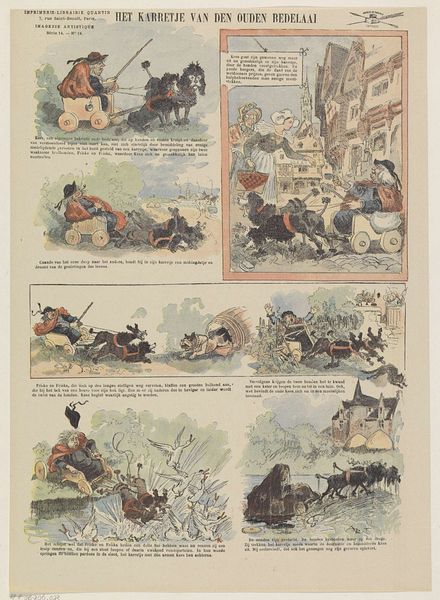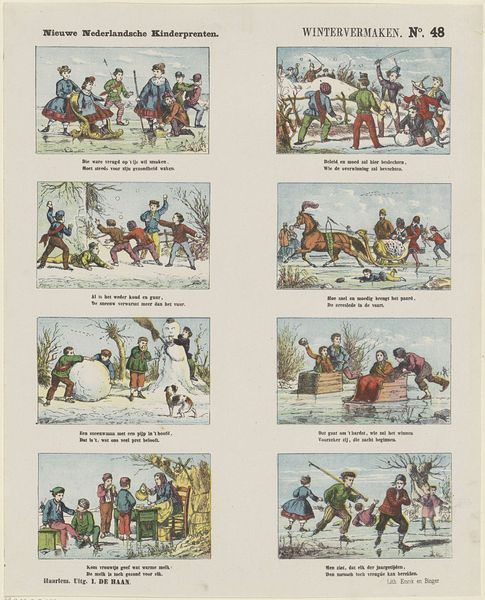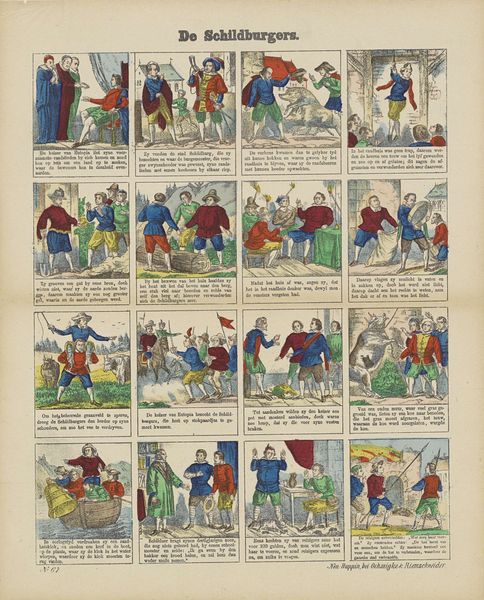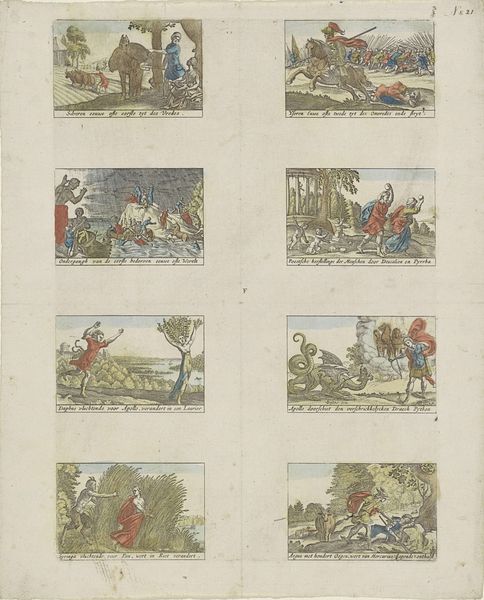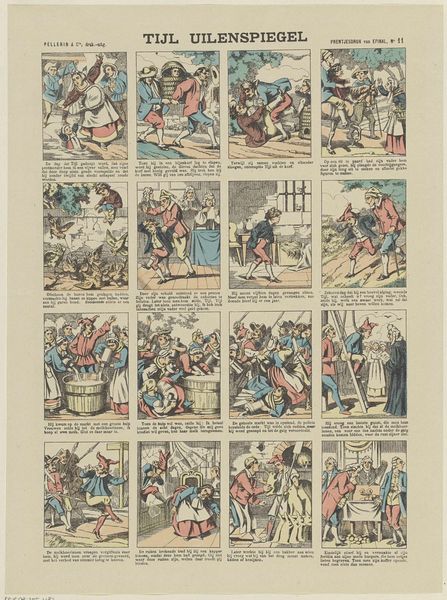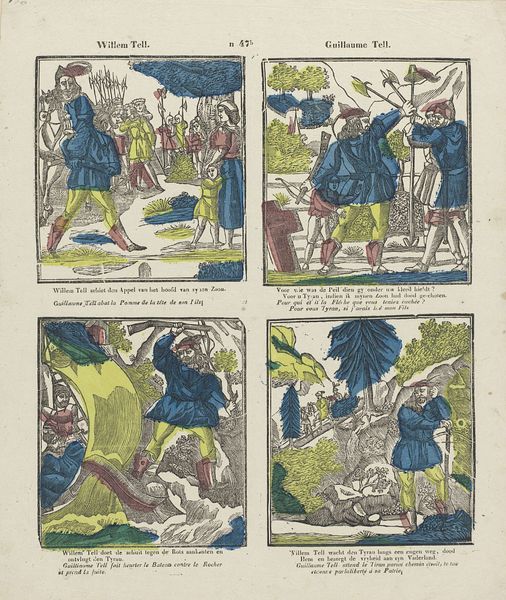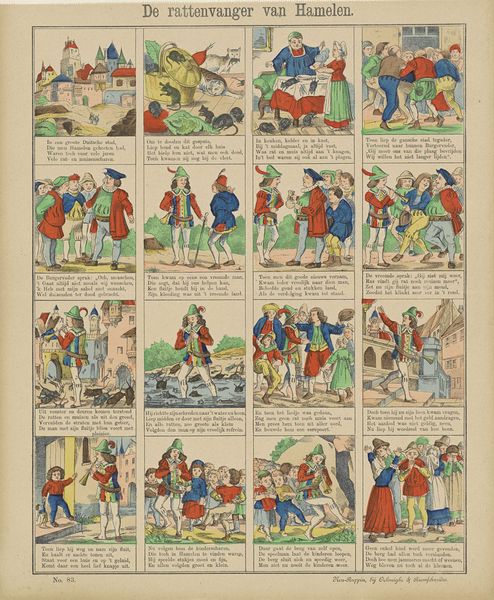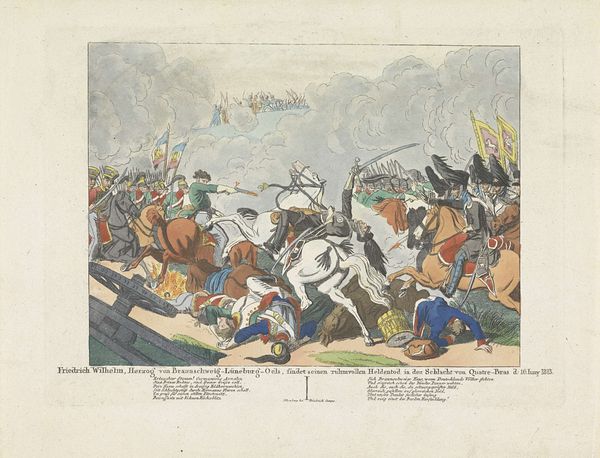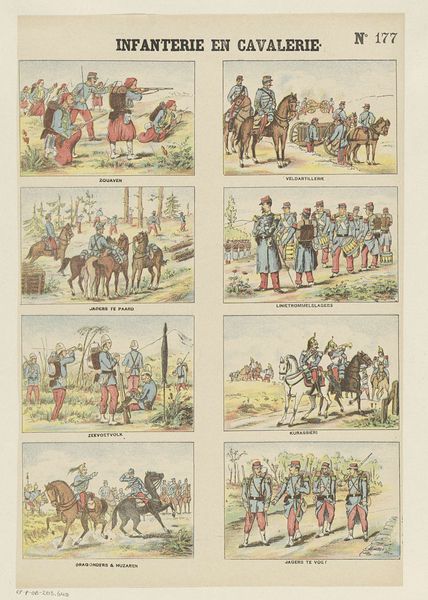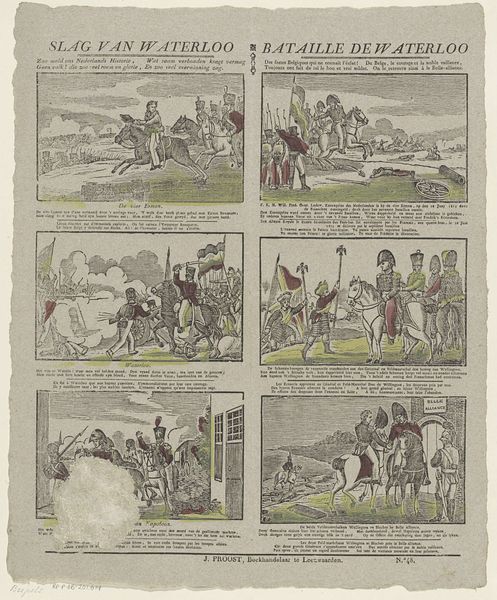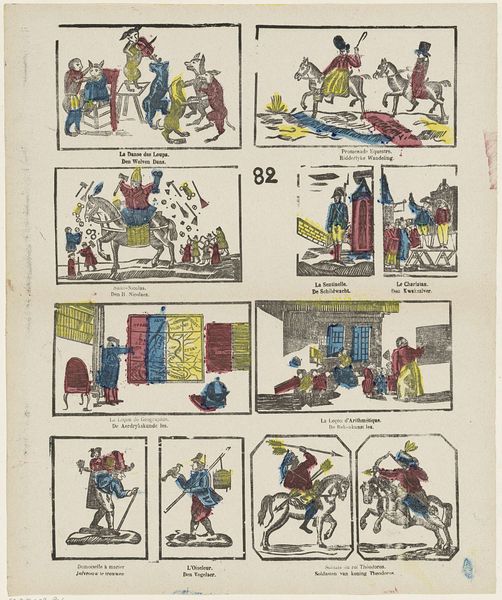
Gevecht tusschen de Russen en Turken / Combat entre les Russes et les Turcs / Gevecht der Russen en Polen / Combat entre les Russes et les Polonais 1866 - 1902
0:00
0:00
drawing, lithograph, print, ink
#
drawing
#
narrative-art
#
lithograph
# print
#
pen illustration
#
pen sketch
#
personal sketchbook
#
ink
#
sketchwork
#
ink drawing experimentation
#
pen work
#
sketchbook drawing
#
history-painting
#
storyboard and sketchbook work
#
sketchbook art
#
doodle art
Dimensions: height 425 mm, width 320 mm
Copyright: Rijks Museum: Open Domain
Editor: This print by Franciscus Antonius Beersmans, created between 1866 and 1902, depicts scenes of combat between the Russians and Turks and Russians and Polish forces. The style feels like a storyboard or even early comic strip. What visual cues really jump out at you in these depictions of conflict? Curator: It's interesting you mention the storyboard effect; the division into panels emphasizes specific moments and, consequently, particular visual motifs related to conflict. Note the repetition of figures in green uniforms and the stark contrast with their adversaries. This division can represent 'us' versus 'them', a visual language perpetuating division, can’t it? Editor: I see what you mean, a sort of deliberate “othering.” It seems really stark. How would these images be interpreted differently across cultures involved? Curator: Precisely. Consider the symbolism embedded within the uniforms, the flags, even the architectural details depicted. They weren't just documenting battles; they were crafting narratives, contributing to collective memories – often, nationalistic ones. Who are the heroes here, and how does the visual shorthand tell us that? And, importantly, who is missing from the narrative? Editor: That makes me wonder about the audiences who were intended to consume them and how that would shape the piece. What are they supposed to think and feel? Curator: Absolutely. Now, if we look at these panels as artifacts reflecting cultural and political sentiments... Editor: Right, it highlights how even seemingly objective historical depictions are actually carefully constructed to shape perceptions. Curator: Indeed, what appears illustrative is, at its heart, powerfully symbolic, a lens through which we can better see the beliefs of the time.
Comments
No comments
Be the first to comment and join the conversation on the ultimate creative platform.

